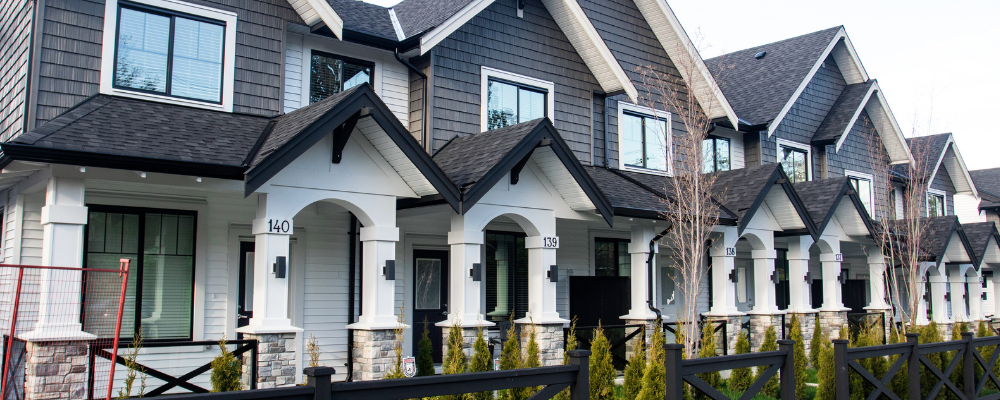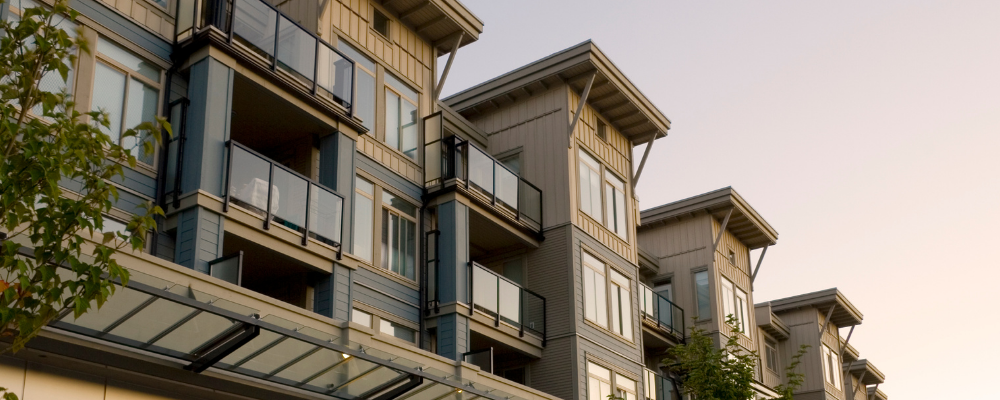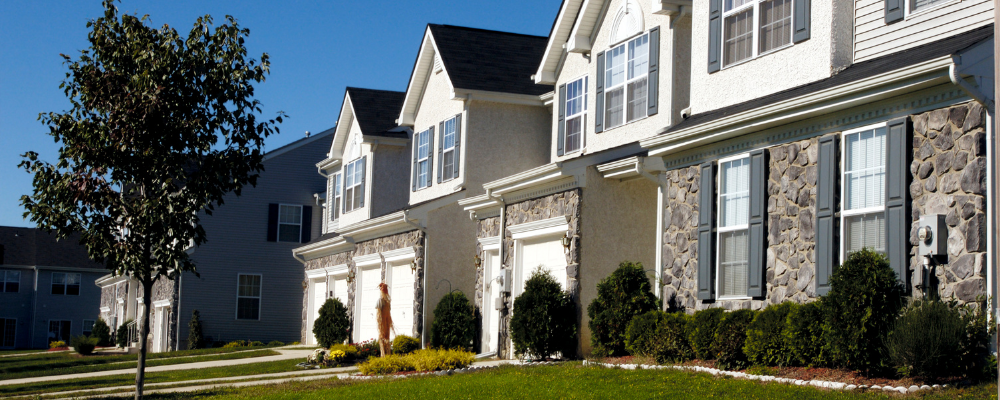A brief summary
New real estate investors are often drawn to multi-family property investments. These can be exciting and rewarding, but it’s important to know how it all works first. We’ll take a closer look at how to find multi-family properties and what steps you should take when going down this route.
Key Topics
Savvy real estate investors are looking at multi-family investment properties more these days. The appeal of investing in multi-family properties is growing as more investors see the benefits of the cash flow and yields that these properties can deliver. Even first-time real estate investors are being drawn to multi-family options. If you’d like to give this strategy a go, let’s take a look at how to find multi-family properties.
What is a multi-family property?
To start with, let’s do a quick rundown of what the term “multi-family property” refers to. A multi-family property is any property that contains more than one housing unit. For example, condominiums, townhomes and apartment buildings or complexes.
For savvy investors, multi-family properties can be a great way to invest, and you can even live on the property yourself which would make it an owner-occupied property. Either way, multi-family properties can offer investors lower vacancy rates with higher yields.

How to find multi-family properties for sale
Method 1: Consult a broker or agent
Real estate agents and brokers can be a big time-saver for investors who simply don’t have the time to scout for weeks on end for a good multi-family property deal. Competition can be stiff for these properties and tracking down a good deal can take longer than you think. So, a broker is a useful tool to have, albeit one that will cost you.
An agent or broker can do the legwork of finding the deal, negotiating the price and taking care of the paperwork. This can save you time, and in the long run money, as they have their ears to the ground and could find a better deal for you.
Method 2: Find foreclosures
Multi-family properties that have become distressed and enter foreclosure are properties that have been seized by the lender because the owners could no longer make their loan repayments. These properties will be sold at a foreclosure auction and invariably sell below market value. Investors who can pick up foreclosure multi-family properties can find bargains if they’re quick off the mark.
The only problem is that competition is stiff at these auctions so investors should go armed with a source of funding ready and their budget firmly locked in. Lenders simply want to get the property off their hands and recoup the losses, so these auctions can be a gold mine for investors.
Method 3: Go to open houses
Going to open houses that are being held in the area where you’re looking to invest is another option for finding multi-family homes. The advantages of this are that buyers can deal with the seller and view the property to see if it’s a good option. The deal can be closed a lot quicker if you’re dealing with the seller themselves.

Method 4: Drive around the neighborhood
A direct approach can sometimes be the best one, which means simply driving around the area where you’d like to invest and looking for multi-family properties that are for sale. If they aren’t for sale but they look like good investments, you could get in touch with the owners anyway and if see if they would be willing to sell for the right price. Look for vacant properties or ones that need work, these are most likely to have owners who will be willing to sell.
Method 5: Search For Multi-family properties online
If driving around to search for your next investment doesn’t suit you, you can also harness the power of social media and online connections to find what you need without having to set foot outside your front door. You can join groups on social media or forums and make online connections to find multi-family properties from all corners of the internet.
The other alternatives are the usual real estate websites such as Zillow, Trulia and Loopnet. Or, for a free online tool, New Silver’s FlipScout offers real estate investors access to listed investment properties, along with data and insights about each property to assist with the assessment of whether the property is viable or not.
Method 6: Network and connect
Using contacts in the industry can go a long way towards finding multi-family property deals that you may not have had access to otherwise. Forming relationships with people in the real estate industry like developers, brokers, other investors and so on, is a good way to find multi-family properties that are new the market or even ones that haven’t hit the market yet.
How to find off-market multi-family properties

Instead of looking for multi-family properties that are already listed, you could search for properties that aren’t on the market yet to avoid stiff competition. Here are a few ways to find off-market multi-family properties:
- Search the neighborhood: Finding properties that you’re interested in buying is a good first step, whether they’re listed or not. If they aren’t listed, you can make contact with the owner directly to see if they’d be open to selling, you can even make them an offer to make it more enticing. This way, you’ve already seen the property and you have a good idea what you’re getting.
- Look online: Before listing a property, some homeowners will put their property online on websites like Craigslist, to test the interest in the property. You can find some good deals by looking online for properties like this and scooping them up before the even hit the market.
- Direct mail: Using marketing resources to approach property owners directly is a tactic used by real estate investors to get owners to think about selling their property when they might not have considered it yet. Direct mail done in higher quantities can yield some good leads on multi-family properties. Essentially, the more mails you send, the more interest you’ll get back and the higher chance you have of finding an off-market deal.
- Networking with landlords: Forming relationships in the industry can be very beneficial to your search for multi-family properties, and this is particularly true for finding off-market properties. Growing a network of landlords can be a useful resource for finding properties that are about to go on the market but will be offered to a select few investors first. The trick is to find a property that a landlord is no longer wanting to keep and make the right offer.
How to buy multi-family properties

Step 1: Select a strategy
The first step to buying a multi-family property is to choose the right strategy, which means choosing the type of property. Whether it be a duplex or an apartment complex, your investment strategy needs to fit with your goals and the type of portfolio you’d like to create. Part of the strategy includes deciding whether you’ll be managing the property yourself or hiring a property manager to deal with the day-to-day tasks of managing the property.
Step 2: Search for properties
Whether you choose to look for listed properties or off-market properties, once you’ve narrowed down where you’d like to buy a property, and what type of property you’d like to buy, you’ve got the foundations to begin your search. As we’ve outlined above, there are a variety of methods to find a property, and you can choose whichever will work best for your needs. As part of this, it’s a good idea to network with realtors, landlords and property owners in the area to get ahead of the competition and find out about deals before they happen or when they’re just hitting the market.
Step 3: Find the funds
Getting approval for funding is crucial to do before you make an offer on a property, so that you know how much you’re approved for ahead of time and can verify this to the property owner so that they know you’re a serious buyer. There are a few funding options to consider:
- Hard money loans: Lenders like New Silver provide hard money loans which are fast funding options for real estate investors to beat the competition. Hard money loans have higher interest rates, however they are short-term loans with flexible loan terms that are easier to qualify for, so many real estate investors choose to go this route.
- Conventional loans: These are traditional loans through banks or other institutionalized lenders, often in the form of mortgages.
- Private loans: Private lenders are either individuals or companies that lend capital from their own investments or other channels and are therefore not bound by the same rules and regulations of conventional loans such as bank mortgages. Borrowers deal directly with the lender themselves and this cuts out the middleman.
The bottom line
If you choose to invest in a multi-family property, it’s a good idea to make sure you know how it all works before you begin. Take a thorough look at the different strategies and make an informed decision so that you can increase your chance of making a success of any deal you choose. Multi-family properties can be a rewarding real estate investing strategy if they’re bought wisely.

